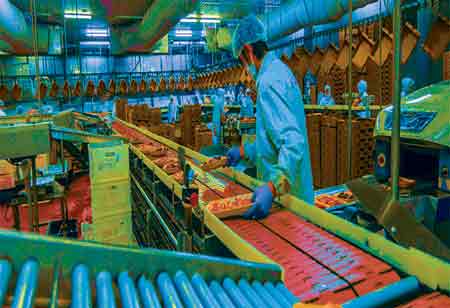Thank you for Subscribing to Food Business Review Weekly Brief
- Home
- Topics
- Alternative Proteins and Plant Based Food
- Beer and Wine
- Canned Beverages
- Coffee And Tea
- Food and Beverage Consulting
- Food and Beverage Financial Service
- Food And Beverages Marketing
- Food Distributors
- Food Ingredients
- Food Sustainability
- Plant Based Food and Beverages
- Seafood Suppliers
- Supplement Manufacturing
- Wine Investment
- News
- Vendor Viewpoint
- CXO Insights
- Conferences
- Newsletter
- CXO Awards
-
Benefits of Automation in the Beverage Industry
The beverage industry is experiencing fast and expansive changes in consumer preference.

By
Food Business Review | Wednesday, December 28, 2022
Stay ahead of the industry with exclusive feature stories on the top companies, expert insights and the latest news delivered straight to your inbox. Subscribe today.

the beverage industry adopts automation and digital tools to meet consumer demand and preferences for varied beverages that meet increasing consumption globally.
FREMONT, CA: The beverage industry is experiencing fast and expansive changes in consumer preference. Beverage brands need to develop variations in flavors, consistent packaging, and beverage products to keep consumers engaged and survive in the market.
Stock-keeping units (SKU) struggle to manage warehouse storage and keep goods moving. Companies increasing their product range and supply is straining warehouse capacity. Automation and other digital solutions are key to warehouse management, and it optimizes available space for effective equipment movement to transport inventory around distribution centers and warehouses. Automation also mitigates other factors impeding production. Labor shortages are straining operations as warehouses increasingly hire unskilled laborers due to the shortage of qualified workers.
Warehouse automation is a multi-phased operation in the beverage industry. A systematic approach improves the material flow process, consumer satisfaction, and supply chain functions. The following applications of automation improve beverage warehousing capability.
Safety: Automated equipment like an automated forklift reduces workspace injuries by eliminating human involvement. According to research, equipment handlers in the transportation and distribution sectors face daily lift truck injuries throughout the year.
Predictive analytic tools predict potential quality and safety issues in beverages in the production line. It uses data from internet of things (IoT) applications to identify safety markers in beverage products before authorities qualify products for distribution. It is useful to prevent food-borne disasters and pass quality checks.
Cost savings: Labor shortages make it difficult for warehouse managers to maintain consistent production yearly. The pandemic increased absenteeism and vacancy rates. The expanding gap between supply and demand forces warehouses to hire lesser qualified workers while their salaries increase. Warehouse managers are finding alternative solutions to supply the workforce with automated technology to reduce workforce dependence and increase service levels. Automated guided vehicles (AGV) enable low labor costs, lowers product and infrastructural damage, and boost production. AGV contributes positively to returns on investments (ROI).
Production efficiency: Warehouse efficiency through automation facilitates greater order pickup, warehouse space management, and employee management. Through automation, managers and skilled workers can focus on more important decision-oriented tasks than repetitive and hazardous tasks. Automation reduces human error in the production process and final product, reducing production time and consistently improving quality.






